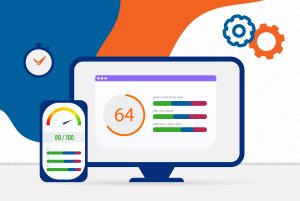With all of the big data available to companies, all too often we see people looking at too many numbers and not focusing in on the right metrics. Businesses should only collect data that will help them make decisions that will generate qualified leads and drive sales efforts. However, most of the data readily available through off-the-shelf software is what we refer to as Vanity Metrics.

Vanity Metrics
Vanity Metrics make you feel good if they go up – they are easy to manipulate, but don’t help you make decisions. Website “hits” are a great example of Vanity Metrics. A hit is recorded anytime a graphic is loaded (multiple hits per page if you have an image-heavy website), a page is loaded, a video is played, a javascript file is called, etc. They are easy to track, but they don’t really tell you much about your website’s performance or your customers’ behavior. Vanity Metrics don’t tell you a story about where you were successful and how you can continue and improve upon that success. Furthermore, you can fall into a trap of working to improve the wrong metrics that are not contributing to the quality of a user’s experience, increasing sales or driving ROI.
Actionable Metrics
Actionable Metrics tell you what you should do to increase your website’s effectiveness. They show you what is working, and areas that you need to improve. Perhaps you saw a spike in traffic or online sales toward the end of the month. Actionable Metrics help you track exactly what caused those extra visitors and ecommerce conversions. Actionable Metrics are more time-consuming to collect than vanity metrics because you may look at several metrics to determine a cause-and-effect scenario that will drive traffic through your website along a path that you have chosen to optimize sales.
Examples of Actionable Metrics include:
- A/B Testing
Setting up a split test allows you to confirm what you believe about your customers’ behavior. When launching a new product on your website, show 50% of your visitors one image and message, and the other 50% a different message. Track your sales to see which message performs better, and adopt it for all visitors. - Determine ROI
Simply knowing your top traffic sources is interesting, but knowing which traffic sources are resulting in the most sales gives you ROI and helps you decide where to spend your time and advertising budget. - Segment Data
Remember that your website visitors are people. Segment your metrics so that you can track user behavior based on whether they are new or returning customers, their market segment, product interest and more. - Funnel Analysis
If you haven’t already, determine the stages of your sales funnel. As customers move from one stage of your funnel to the next, the percentage of those conversion rates should remain steady or grow. If your conversion rates are dropping at a particular stage, you need to take action.
Are you collecting the right data? To learn more about collecting Actionable Metrics for your business, contact Bill White at 800-606-1610.


